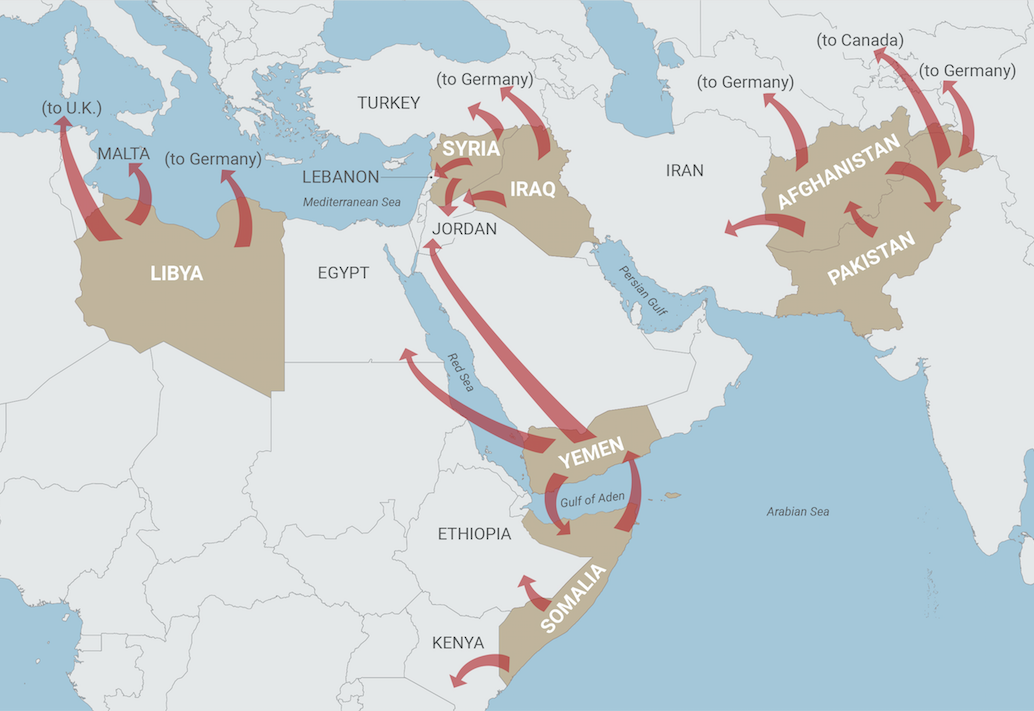Afghan Refugees

The U.S. post-9/11 wars have displaced at least 38 million people in and from Afghanistan, Iraq, Pakistan, Yemen, Somalia, the Philippines, Libya, and Syria.
Violence has been the major factor in involuntary population movements among Afghans. Since 2001, 5.9 million Afghans have either been displaced internally or have fled the country, primarily to Pakistan and Iran where they face an uncertain political situation. Iranian officials, for example, deport thousands of undocumented Afghans without allowing them the opportunity to demonstrate a legal right to remain in Iran, or to lodge an asylum application.
When Afghan refugees do repatriate, they return to a country that remains plagued by war, poverty, and lawlessness. A February 2023 World Food Program Situation Report revealed that “4 million children are acutely malnourished, including 3.2 million children under the age of five.” Access to health care remains very limited, with a majority of the population lacking access to even basic healthcare services. In areas where fighting continues, militants lack respect for the neutrality of health care facilities, making visiting these facilities dangerous.
Key Findings
-
Since the start of the post-9/11 wars, at least 5.9 million Afghans have fled the country or been internally displaced.
-
Afghan IDPs and repatriated refugees unable to return to their original places of origin often live in informal settlements, where many people have died due to environmental conditions and illness.
-
Key public health indicators in Afghanistan are poor, with low rates of access to basic health care and high rates of child malnourishment.
Recommendations
- The Congressional Research Service should submit an annual report to Congress on displacement and refugees in regions where the US is at war.
(Page updated as of May 2023)

